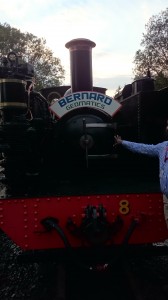The annual RSPSoc conference was held from the 2nd till the 5th September at Aberystwyth University. In attendance from Newcastle University were School Research Fellow Dr Pauline Miller and 2nd year PhD student Andrew McClune, who both presented on their own projects. Whilst the title of the conference was ‘New sensors for a changing world’, a large variety of research was presented over the three days from mass grave detection to using citizen sensor data to classify remotely sensed imagery.
The first day of the programme consisted of four workshops: lidar processing using high performance computing; the habitat inventory of Wales; an RSPSoc UAV special interest group (SIG) meeting; and a NERC Field Spectroscopy Workshop. The UAV SIG meeting was attended by Pauline, who is involved in a number of UAV research projects at Newcastle. This meeting was held jointly with ARPAS-UK (Association of Remotely Piloted Aircraft Systems), and provided a good opportunity for the academic community to interact with industry representatives from a number of UAV service sectors. The workshop was centred around debate on some highly topical issues, including how to optimise the quality of scientific UAV sensors, and aspects surrounding legislation and licensing. Overall, it provided an excellent forum for academia-industry discussion, and will hopefully be a forerunner for similar future meetings. An ice breaker reception was held on the evening of this first day at the National Library of Wales, with the opportunity to visit the Dylan Thomas exhibition and view the impressive map collection which consists of over 1.5 million maps (though there was not enough time to get round them all!).
The second day saw the official opening of the conference with a keynote session from Dr Susan Brown of Winrock International, who spoke about measuring carbon stocks in tropical forests. Pauline chaired the first morning session on Image-Based Measurement Techniques and Applications, and also presented her research on the use of photogrammetric approaches for measurement of multi-decadal Antarctic glacial mass change. The afternoon started with another keynote address from Dr Masanobu Shimada from the National Space Development Agency of Japan before technical sessions on LiDAR and REDD+. The second day was concluded with a steam train journey along the Vale of Rheidol railway, sponsored by Newcastle PhD student Mitko Delev’s company Bernard Geomatics, to Devil’s Bridge for some refreshments.

The third day started with Dr Richard Lucas delivering a keynote presentation regarding sensor interoperability in the context of new sensors. Technical sessions covered a wide range of topics from landslides and mass movement to observations and impacts of fire and ice. A diverse range of topics were also presented in the poster session, where Andrew presented his work on 3D building reconstruction from aerial photography. The conference dinner and award ceremony was held in the evening and the recipient of the best doctoral thesis award was Newcastle Geomatics graduate Dr Matthias Kunz (2014), for his research on ‘Elevation changes of mountain glaciers in the Antarctic Peninsula using ASTER-controlled archival aerial photography.’
For those still standing after the previous night’s ceilidh, Professor Mark Danson provided the final keynote session entitled ‘Laser spotlight on forest structure’ before the final series of technical sessions on landcover and landuse and UAVs, which brought the conference to a close for another year.
Overall the conference was a resounding success and a great platform for the RSPSoc 2015 conference, hosted in Southampton, to build upon.
